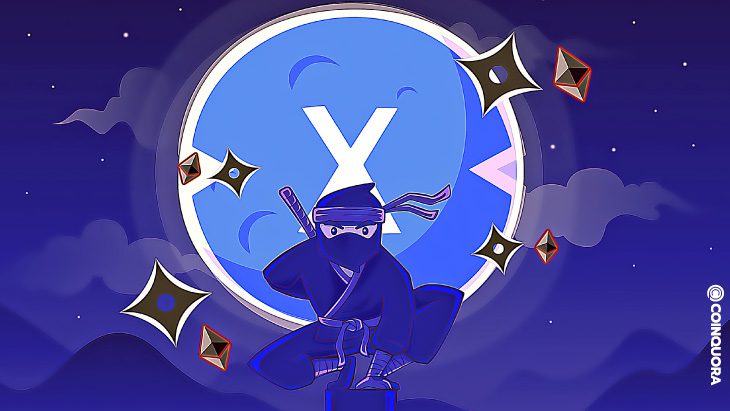- Reports say that the XDC Network, through community engagement, expanded upon its predecessor’s vision for a scalable, decentralized ecosystem.
- XDC Network is used for several innovative applications in Trade Finance, remittances and other decentralized infrastructure use cases like storage, encrypted email, tokenization, stablecoin deployment and price oracles.
- Therefore, many people have come to regard XDC Network as the new “Ethereum-killer”.
Since the inception of Bitcoin and its underlying technology, blockchain, many blockchain projects have emerged to disrupt the status quo and offer alternative blockchain solutions for a variety of use cases beyond the Bitcoin store of value. Emerging blockchain projects often seek to offer better technology than their predecessors. The XDC Network is a growing blockchain platform that has improved upon its predecessor’s, Ethereum’s, vision for a decentralized, blockchain-powered ecosystem that features code-enforceable smart contracts. XDC Network is fully Ethereum Virtual Machine (EVM) compatible, which positions it to attract a large community of Ethereum developers and encourages various Dapps, which are built on Ethereum Network, to migrate over to XDC. Near zero gas fees, 2 second transaction time, and 2000 TPS are also other factors that make it attractive to build on XDC Network.
People are taking notice as XinFin and the XDC Ecosystem have built a global network that links users to marketplaces featuring decentralized applications (dApps). These dApps, moreover, offer unparalleled efficiency, security, and user control through the XDC Network’s fundamental technology. In addition, the network also has user-friendly on-ramps for developers, including SDKs, enabling users to seamlessly and efficiently build applications on top of XDC. XDC Network is becoming a platform for mainstream utility and acknowledges that potentiality through its stand-out technology.
XinFin Head of North America Ecosystem Development — Billy Adams, said in an article,
XDC teams are working diligently to optimize the network’s technology offerings and provide the resources needed for developers to easily build on the XDC Network. Projects with utility and developers with experience will find a sense of belonging within our decentralized network. Many of the network tools which complement our ecosystem are designed to facilitate adoption of the XDC Network by saving developers time and effort as they begin the on-boarding process.
A full review of XDC Network, suggests that XDC Network has a lot of use cases. Notably, the network’s native currency — XinFin Digital Contract (XDC) powers the entire network. This enables developers to create new types of XDC-based tokens, which power the dApps through smart contracts. These smart contracts are self-executing — they facilitate and enforce transactions on the blockchain.
Furthermore, being a permissionless blockchain, XDC allows developers to create and develop applications without a central authority. Currently, there are already numerous dApps built on XDC Network, with thousands of users and dollars generated.
With that said, let’s take a look at the major decentralized use-cases of XDC Network so far.
The first is StorX — a distributed cloud storage that is powered by XDC Network. This cloud storage network empowers users to store data securely and safely on the cloud.
XinFin has also partnered with Tradeteq to provide tokenized traded finance products to investors. Tradeteq is a technology provider for trade finance asset distribution. Moreover, Tradeteq’s platform, which operates on the XDC Network, enables originators to package trade finance products into standardized investments that can be bought and sold through private distribution networks.
Next is Plugin — a decentralized oracle platform. This offers cost-effective solutions for any smart contract built within the XDC ecosystem. Additionally, the Plugin collects data from several external sources, gathers them, and ensures that the values provided to its users are always correct.
Another is LedgerMail — it is the world’s first decentralized email service that has the power of blockchain and XDPoS consensus, as well as cryptographic algorithms and a zero-trust mechanism. It operates on the XDC Network.
Adding to the use cases, XinFin and Butterfly Protocol announced recently that the Butterfly Protocol blockchain domain system will use a XDC Network blockchain-specific domain system.
Additionally, there’s WadzPay, a prominent blockchain-based payments platform that partnered with XinFin. XinFin will help Wadzpay to enhance its offerings in Trade Finance, as well as in its Buy Now Pay Later (BNPL) products.
Likewise, GLOBIANCE recently launched fiat pegged stablecoins (SGDG and EURG) on XDC Network. The stable coins were issued on XDC Network to leverage the speed, near-zero gas fees, as well as the two-second transaction time. Recently, two stable coins STASIS EURO and USNota also Started using XDC Blockchain Network.
On the Decentralized Exchange (DEX) side, Globiance and XSWAP released a DEX to support the XRC20 tokens deployed on XDC Network.
Suffice to say, the myriad of use cases of the XDC Network demonstrates how this blockchain network can provide advantageous solutions to many different industries and sectors. In fact, these advantages make a clear case for how the XDC Network can become known as an “Ethereum-killer.” Ultimately, Ethereum has many gaps that XDC Network is well-suited to fill in the blockchain industry, especially regarding transaction cost and speed.
The future of XDC Network certainly looks promising, and we await to see how things unfold for the growing network.


